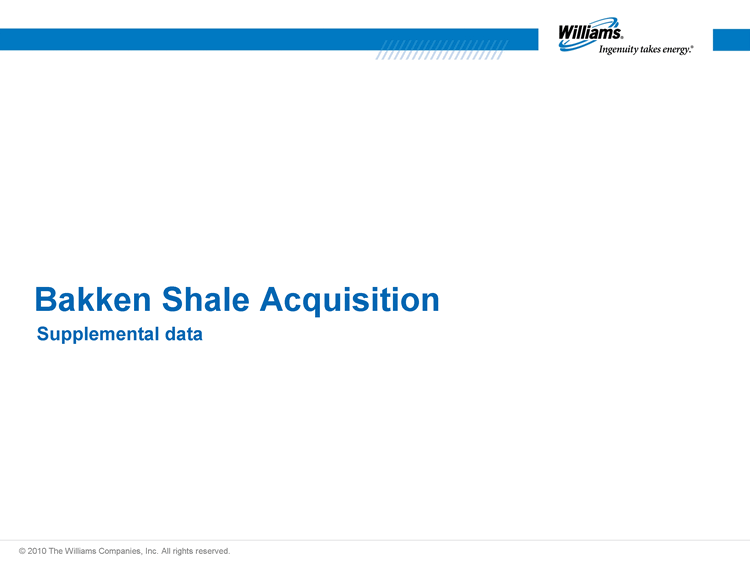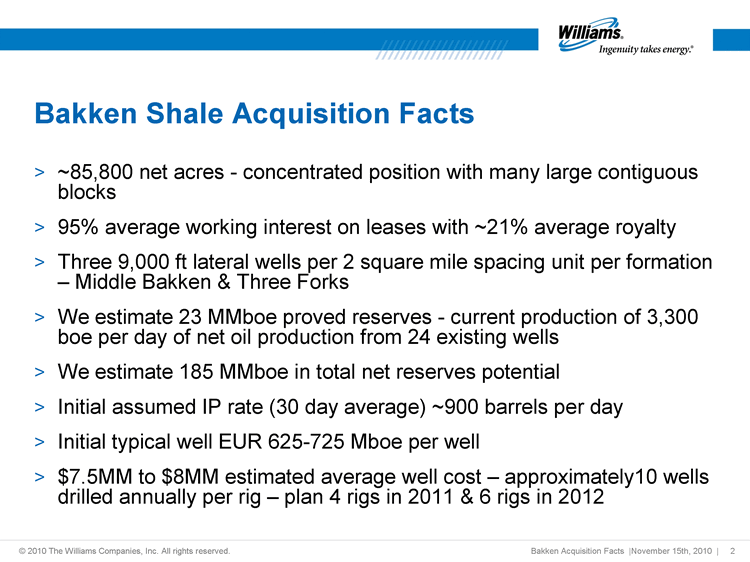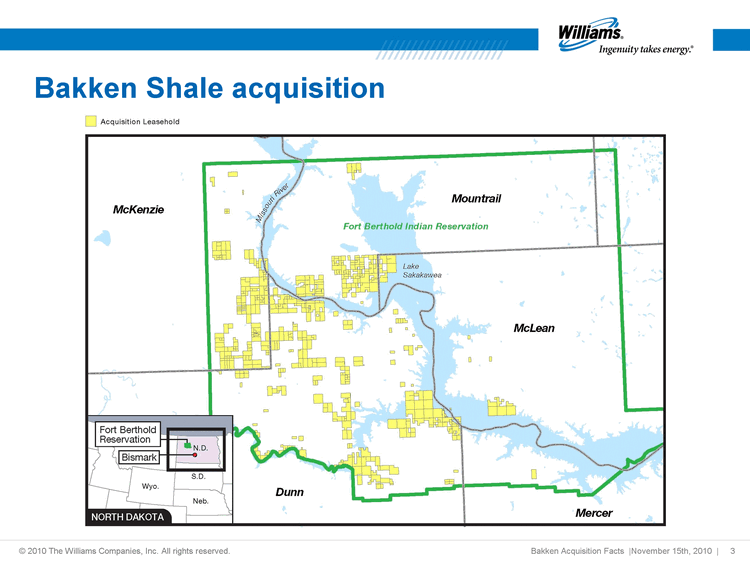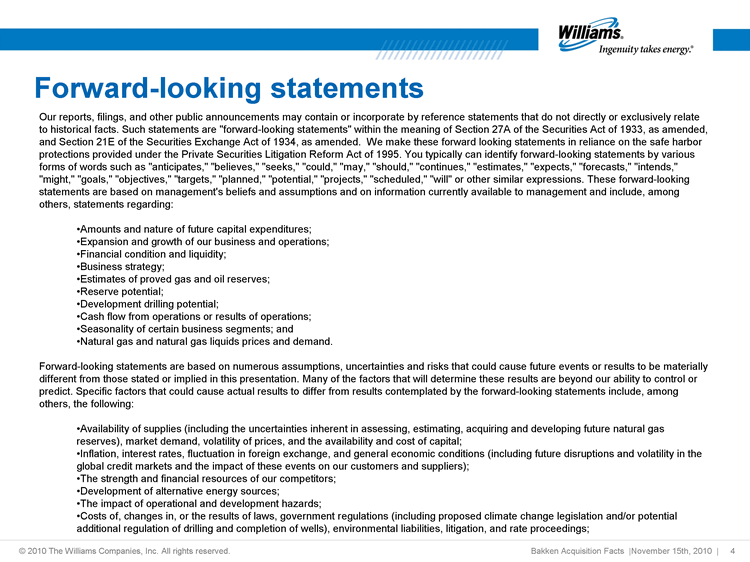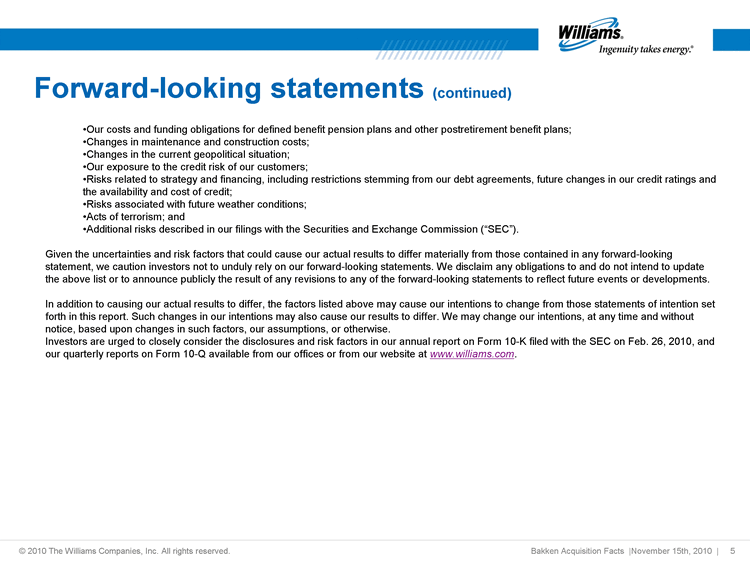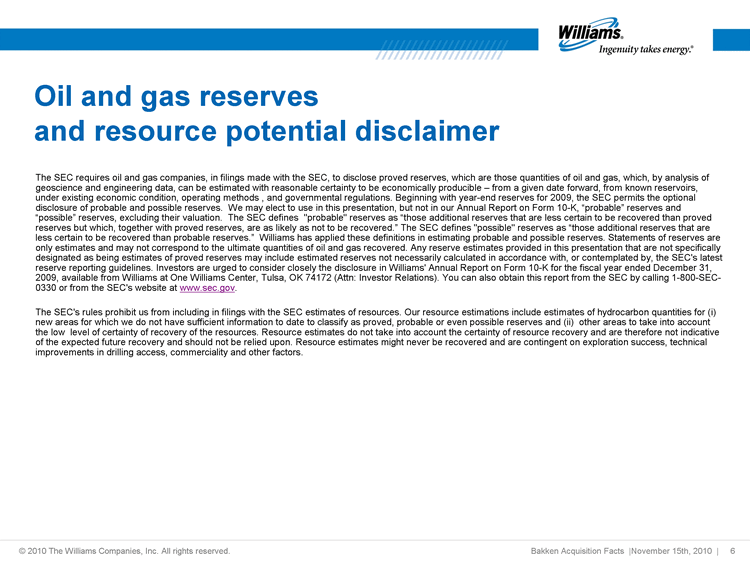| Forward-looking statements Our reports, filings, and other public announcements may contain or incorporate by reference statements that do not directly or exclusively relate to historical facts. Such statements are "forward-looking statements" within the meaning of Section 27A of the Securities Act of 1933, as amended, and Section 21E of the Securities Exchange Act of 1934, as amended. We make these forward looking statements in reliance on the safe harbor protections provided under the Private Securities Litigation Reform Act of 1995. You typically can identify forward-looking statements by various forms of words such as "anticipates," "believes," "seeks," "could," "may," "should," "continues," "estimates," "expects," "forecasts," "intends," "might," "goals," "objectives," "targets," "planned," "potential," "projects," "scheduled," "will" or other similar expressions. These forward-looking statements are based on management’s beliefs and assumptions and on information currently available to management and include, among others, statements regarding: Amounts and nature of future capital expenditures; Expansion and growth of our business and operations; Financial condition and liquidity; Business strategy; Estimates of proved gas and oil reserves; Reserve potential; Development drilling potential; Cash flow from operations or results of operations; Seasonality of certain business segments; and Natural gas and natural gas liquids prices and demand. Forward-looking statements are based on numerous assumptions, uncertainties and risks that could cause future events or results to be materially different from those stated or implied in this presentation. Many of the factors that will determine these results are beyond our ability to control or predict. Specific factors that could cause actual results to differ from results contemplated by the forward-looking statements include, among others, the following: Availability of supplies (including the uncertainties inherent in assessing, estimating, acquiring and developing future natural gas reserves), market demand, volatility of prices, and the availability and cost of capital; Inflation, interest rates, fluctuation in foreign exchange, and general economic conditions (including future disruptions and volatility in the global credit markets and the impact of these events on our customers and suppliers); The strength and financial resources of our competitors; Development of alternative energy sources; The impact of operational and development hazards; Costs of, changes in, or the results of laws, government regulations (including proposed climate change legislation and/or potential additional regulation of drilling and completion of wells), environmental liabilities, litigation, and rate proceedings; 4 Bakken Acquisition Facts |November 15th, 2010 | |
